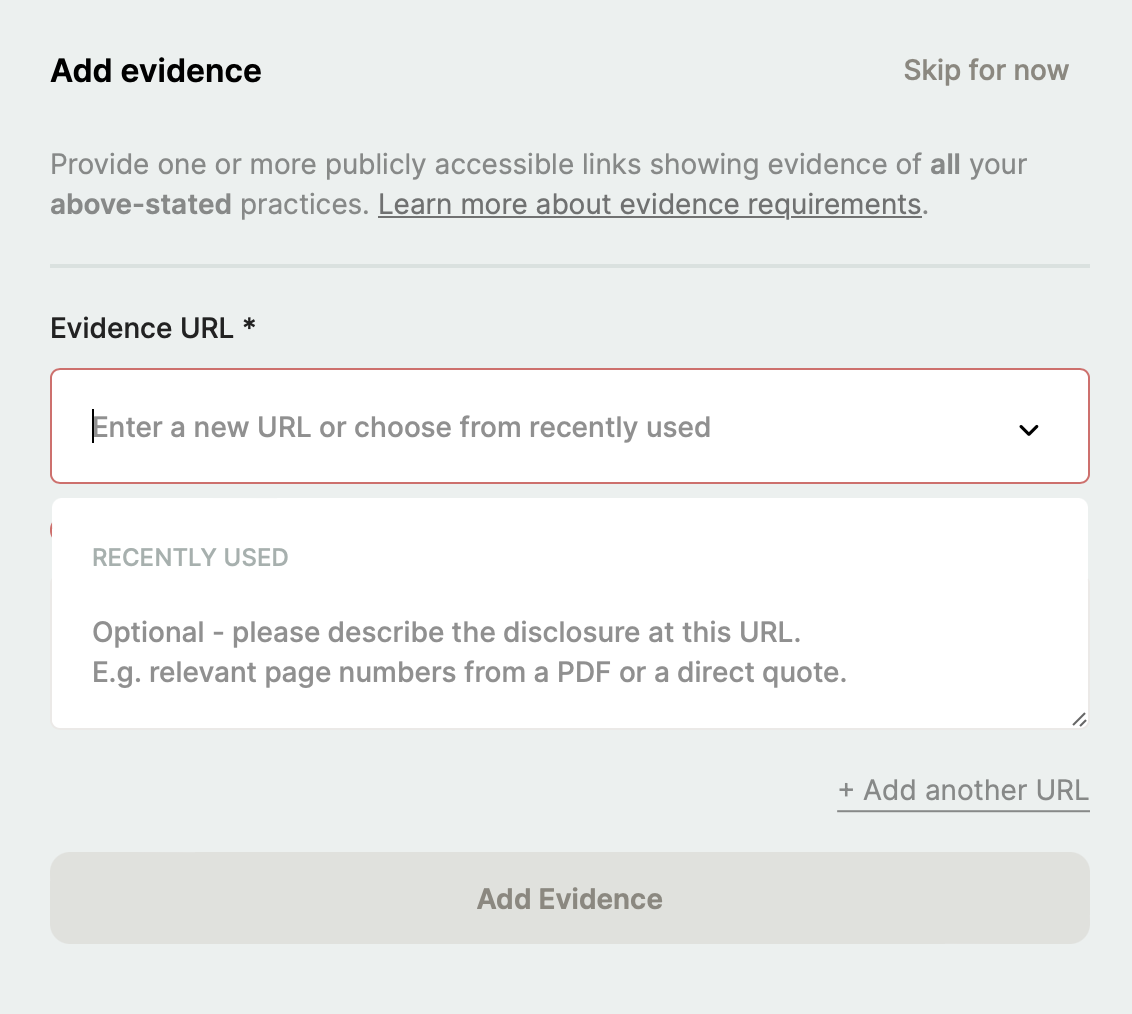Transparency is key to the Good On You brand rating system [PDF] and essential for meaningful and verifiable industry progress. That’s why Good On You only considers publicly available information. Here’s what you need to know to successfully provide evidence for your updates.
Brands should disclose on their own websites
We consider a brand’s website (including sustainability reports or other published PDFs linked from the website) as the primary source for disclosures, as consumers have a right to know this information as they are shopping. This information should be easily visible and accessible to consumers and other stakeholders when they land on your website.
In certain cases, a link to an external third party might be more relevant such as a brand's CDP or Fashion Transparency Index score (check the guidance below for specific information types).
Use specific and tangible language when disclosing
In general, your public disclosures should be specific and provide tangible actions and evidence. For example don’t say something like “our suppliers recycle offcuts where possible”, as it’s vague and imprecise. Rather, share specific facts such as “40% of offcuts were reused and 30% recycled”.
For small brands with limited resources, Good On You has assembled this guide [PDF] with 21 tips about improving your sustainability communications.
How to add evidence in Good Measures
When you answer a question, you'll see an option “+Add evidence”. Just click on it and enter the relevant URL and any comments you think would be helpful for Good On You’s analysts to know (for example, specifics as to where to find the relevant evidence such as the page number for a PDF).
You should provide URLs to the most specific evidence that demonstrates your disclosure on the answers provided in each issue. Good On You’s ratings analysts will manually verify that the information available at the URLs you submit is suitable evidence. Learn more about why evidence is sometimes not accepted.
Guidance on providing evidence for specific types of information
Standards and certifications:
You may provide a link to your own website where you disclose a certification. Ensure correct usage of the certification logo. You may provide a link to the external third party that publishes your certification or score for example for CDP or Fashion Transparency Index. Learn more about how Good On You incorporates standards and certifications.
Product and material mix:
For some questions you will be asked to identify a proportion of products using certain materials, certified materials, or your total material mix. Ideally these proportions should be listed specifically on a sustainability report in which case you should indicate the relevant page number(s).
If you don’t have such a disclosure then provide a link to a single product or product range demonstrating usage of the material or certification. Good On You will validate the information provided in Good Measures against the proportion of products across the collection. If your product pages don’t disclose the relevant materials or product-level certifications then the information provided can’t be verified.
Targets and progress:
We will review evidence of targets disclosed on your website or in publicly accessible reports. Good On You will verify on external websites where relevant—for example, checking the Science-Based Targets initiative website to see that a target has been approved.
Wherever possible you should clearly report performance against previous targets on the brand website and/or in company reports. Learn more about how Good On You considers targets and progress made.

